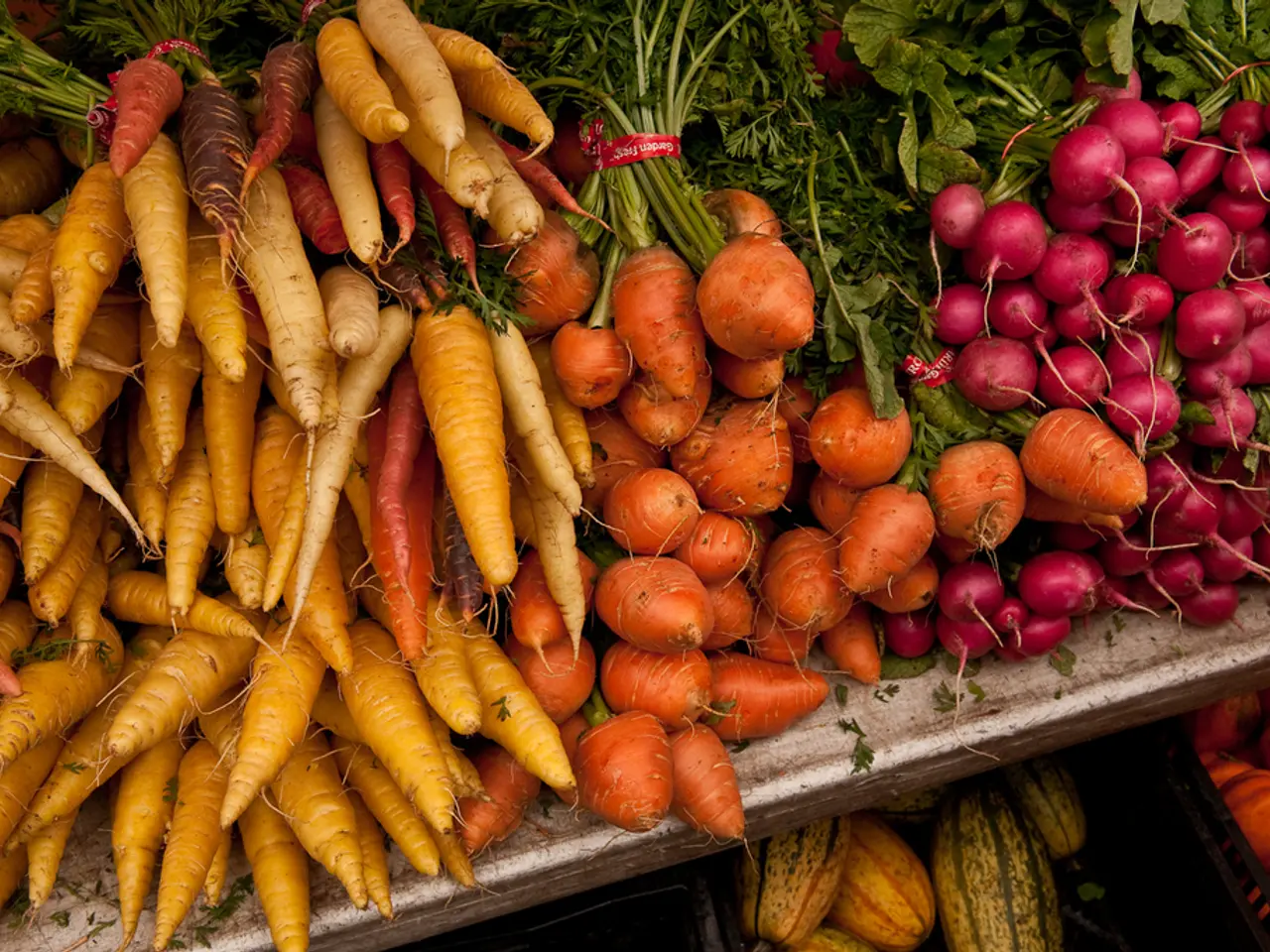Practical Advice for Cultivating a Vibrant Vegetable Garden
Starting a vegetable garden can be an enjoyable and rewarding experience. Here's a step-by-step guide to help you get started:
- Choose the Right Location Select a site that receives at least 6-8 hours of direct sunlight daily, has good drainage, easy access to water, and is convenient for regular tending.
- Plan Your Garden Layout For beginners, raised beds or containers work well, especially in small spaces. Arrange taller plants on the north or west side to prevent shading smaller plants. Use companion planting to enhance growth and deter pests.
- Choose Vegetables Wisely Start with 3-5 types of vegetables you enjoy eating that are known to be easy to grow, such as tomatoes, lettuce, carrots, radishes, beans, zucchini, peas, and spinach. Consider grouping plants by their water needs.
- Prepare the Soil Mix in compost or organic matter to improve soil fertility and structure. In raised beds, this is easier to control and enhances drainage.
- Planting Time Plant seeds or transplants according to the season and local climate. In warm weather, seeds generally germinate faster, so July can be a good time for warm-weather crops. Water seeds after planting to help them settle.
- Watering and Mulching Water regularly and keep the soil moist but not waterlogged. Deep-rooted plants like tomatoes require less frequent, deeper watering, whereas leafy greens may need more frequent watering. Mulch helps retain moisture and suppress weeds.
- Care and Maintenance
- Monitor plants for pests and diseases and use companion plants or natural deterrents to manage pests.
- Avoid overcrowding by respecting spacing guidelines on seed packets or plant tags.
- Stagger planting dates for crops like lettuce to ensure continuous harvests.
In a typical beginner setup, like a 4x4-foot raised bed, divide the space into sections for different vegetables and companion plants to maximize productivity and pest control.
For optimal growth, consider planting melons and cucumbers in the compost pile. Vertical planting can save space in a vegetable garden by using trellises or arbors for beans, cucumbers, melons, and squash.
Slower-starting seeds like parsley and parsnip benefit from pre-soaking. Newspaper covered with straw can be used between garden rows to eliminate weeds and retain moisture.
Long-growing crops such as indeterminate tomatoes, eggplants, and peppers should be side-dressed with a balanced vegetable garden fertilizer to keep them producing. When planting seedlings in peat pots, it's important to tear off the top and bottom of the pot before planting to prevent root capture and moisture loss.
Straw can be used to extend the fall harvest season for crops such as cabbage, Brussels sprouts, and broccoli by trapping heat. Seeds such as broccoli, cabbage, and arugula do not need pre-soaking before germination.
To protect seedlings from cutworms, consider using the cardboard centers of toilet paper rolls as protective collars. Water-filled tepees can be used for protection from cold for early planted tender vegetables.
Growing vegetables organically ensures healthful produce and saves money. For quick results, especially in cold climates, large seedlings grown on the windowsill or purchased at a nursery can be used. A vegetable garden can be added to a landscape, and vegetable recipes, vegetable choices, vegetable garden care, and general gardening information are available for further learning.
- To save space in a vegetable garden, consider vertical planting techniques, such as using trellises for beans and arbors for cucumbers, melons, and squash.
- To maintain a healthy vegetable garden, organic matter like compost should be added to the soil, and crops like melons and cucumbers can be planted in the compost pile.
- For a balanced lifestyle, consider integrating a vegetable garden into your home and garden. This can not only provide fresh, healthy produce but also become an enjoyable hobbies, such as learning vegetable recipes and gardening information.




